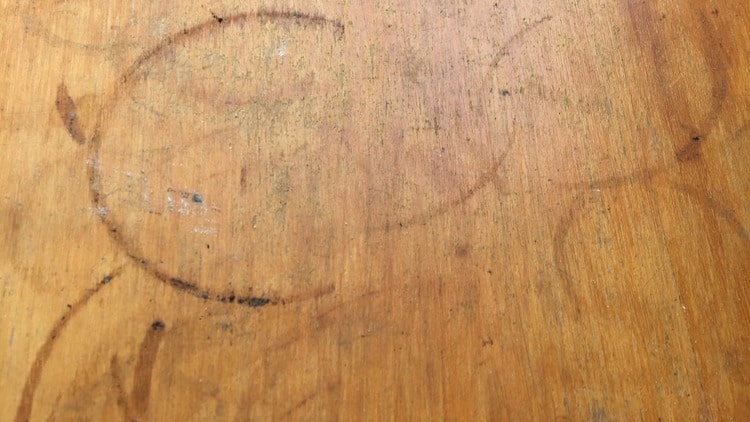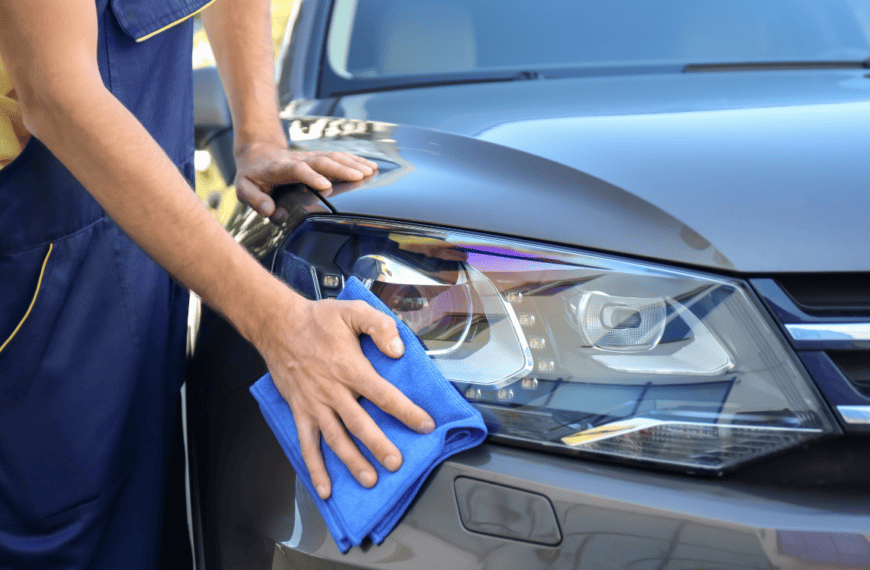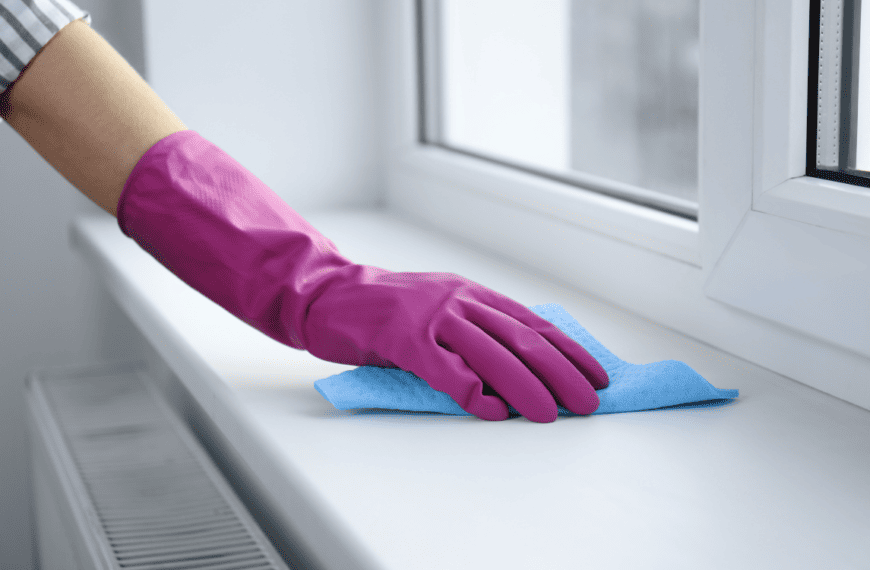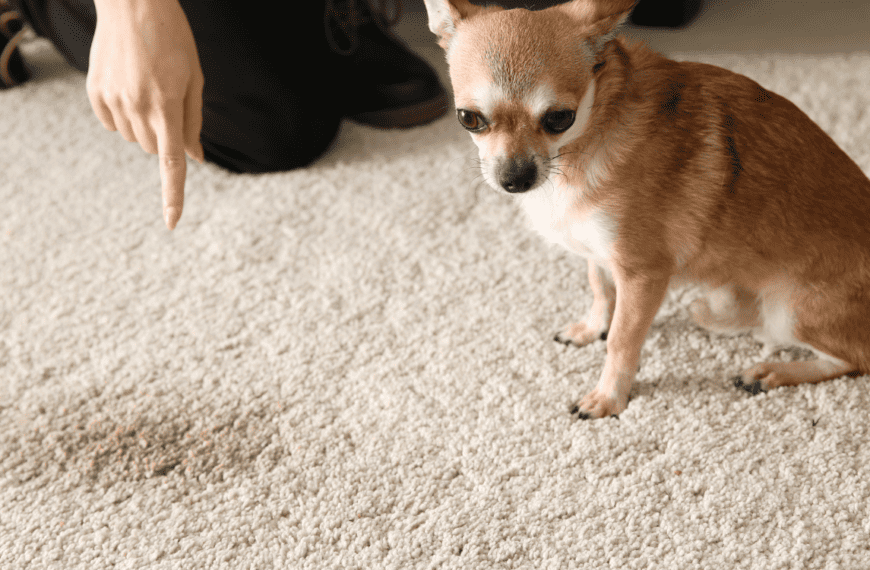I had just purchased a new table for our kitchen, and it took about two weeks to end up with a heat stain. I know I should use placemats to cover, but I didn’t think of it and sat down with a hot dinner only to find a stain on the table later. Luckily with some prior knowledge on how to get heat stains out of wood, I was able to remove it, and you can’t tell at all. If you want some of my best methods and tricks, I’ll show you how to remove heat stains from wood.
How To Get Heat Stains Out of Wood
Heat stains happen quickly, and if you want to make your life easier, you need to remove them just as quickly. In each of these methods, I recommend that you test a little part of the wood that is not visible (many times, you can look under the table). The last thing you want in removing heat stains is to take the finish off or create more damage.
Hair Dryer
If you are wondering how to remove heat marks from veneer and all other types of wood surfaces, the hair dryer is your best choice. It’s simple, efficient, and runs a very low chance of causing damage.
Hair dryers heat the wood and release the moisture that is stuck inside. I have the best luck with the hair dryer when I move it around in circles over the stain.
What You Need: hair dryer, clean cloth
- Clean the wood surface where the white heat marks are apparent
- Ensure the area is dry
- Put a hair dryer on medium heat setting and let it heat up
- Wipe the table with a clean microfiber cloth as you are heating
- Repeat until heat stain in wood furniture is gone
How do you get white spots out of wood?
The hair dryer can work to remove all white spots from wood, whether you are dealing with water stains or heat stains. Use the hair dryer to heat up the surface and wipe continuously with a clean cloth.
How do you remove heat marks from varnished wood?
Varnished wood should work a little better to resist heat stains. However, you can use a hair dryer to get heat marks out of varnished wood. Put the hair dryer on a low heat setting and add more heat if needed to remove all white marks.
Clothes Iron
Listen to me carefully on this one; if you don’t do this right, you will have an iron mark on your table in addition to your white heat mark. An iron works similarly to a hair dryer, but it can offer slightly higher levels of heat for stains that are more persistent. Treating heat stains with heat is absolutely a good strategy; you just need to be careful.
What You Need: clothes iron, clean white towel, cleaning cloth
- Let your iron heat up on a medium setting (do not use steam)
- Place a towel over the heat stained area
- When the iron is heated, place it on the towel so the stain receives some additional heat
- Wipe with the towel
- Leave the iron on the stain for very short spurts; you do not want it to damage the finish
- Keep the heat setting on the iron to medium and repeat the process until the stain disappears
Toothpaste
Toothpaste has alkaline properties that can rejuvenate your wood surfaces that have experienced heat stains. When I do this, I mix the toothpaste with a little baking soda; it seems to fight the stain better. In addition, only use white toothpaste on this; the more basic the toothpaste, the better. Save your fancy gels and additives for your teeth!
What You Need: toothpaste, baking soda, clean cloth, small container
- In a small container, mix one part toothpaste with two parts baking soda to make a paste
- Spread the paste on the wooden surface and let it sit for about ten minutes
- The baking soda and toothpaste will soak into the wood’s pores and help release the trapped moisture
- Wipe the surface with the clean cloth
- Repeat if necessary
Mayonnaise
Mayonnaise may seem like an odd solution to remove white heat stains, but it can work. If you have a wood table with a veneer finish, this is a good option, maybe better than the iron method if you are nervous about damage. Mayo has natural oils in it that will help release moisture trapped inside the wood table.
What You Need: mayonnaise, clean cloth
- Make sure your table is clean and dry
- Place mayonnaise directly on the heat stains on your wood surface
- Let the mayo sit for about three hours, so it has time to soak into the wood pores
- Use a damp cloth to remove the mayo
- If this does not work on the wood stains, you may need a method that applies heat
Wood Stain Remover
If DIY solutions are not your thing, a few drops of Liberon Furniture Ring Remover on a clean rag can work to remove pesky heat stains. Liberon works well on varnishes, lacquers, and French polishes, but you should check to ensure that it will not react poorly with your wood furniture.
What You Need: Liberon Furniture Ring Remover, clean cloth
- Clean the area where you notice heat stains
- Place a small amount of Liberon Furniture Ring Remover on a clean rag
- Rub the rag with the Liberon into the stain
- You may need to rub hard for it to soak into the wood’s pores
- Repeat if necessary
- Wood will be left with a slightly shiny surface when finished
Petroleum Jelly
Petroleum jelly has a high oil content which can remove the water content stuck in the table and even help to rejuvenate it.
What You Need: petroleum jelly, clean cloth
- Put petroleum jelly on the white heat marks
- Let it sit for about 30 minutes
- Wipe with a clean cloth
- If the heat stains remain on the wood furniture, use heat to remove heat stains
Vinegar and Olive Oil
If you have read enough of my household guides, you know how much I love vinegar as a stain remover. I’ll warn you that if you just pour vinegar all over the wood furniture or wood table and let it sit, you may ruin the finish. That’s where the olive oil comes in; the two mixed together make a good solution.
What You Need: vinegar, olive oil, small container, clean cloth
- Clean the surface table and make sure the wood cools before working with the vinegar and olive oil
- Create a mixture of 1 part vinegar to 2 parts olive oil
- You may want to start with a tablespoon of each so you don’t have a ton of leftover stain fighting solution
- Let the vinegar and olive oil sit for about an hour
- Wipe clean with a cloth
Salt and Olive Oil
Olive oil can penetrate the wood surface and release the water content, and the salt will soak it up.
What You Need: salt, olive oil (or vegetable oil), clean cloth, damp rag
- Clean the area of the furniture that has heat stains
- In a small container, mix olive oil and a bit of salt, don’t let the mixture get too gritty
- Apply the mixture to the stain
- Let it sit for about an hour
- Wipe clean with a damp cloth to remove any excess oil
Lemon Oil & Steel Wool
Lemon oil and steel wool can work together well, with the acidic properties from lemon working to clean and the oil penetrating the wood. This is not my favorite method, as I just don’t like taking steel wool to a wood surface, but it can work.
What You Need: lemon oil, fine grade steel wool, clean cloth
- Pour lemon oil on your stain
- Scrub the lemon oil with the steel wool, following the grain of the wood
- Do not scrub too hard
- Wipe with a clean cloth
Baking Soda and Water
The famous baking soda paste works yet again. I tried this method once after someone put a hot pizza box on our wooden table. The method worked well–it never gave the table a chance to become overly stained.
What You Need: small container, baking soda, water, clean cloth
- Make a paste with baking soda and water; two parts baking soda to one part water usually works quite well to remove heat stains from wood
- Apply the paste to the table and let it sit for about 20 minutes
- Come back and wipe the area
- Sprinkle a little additional baking soda if necessary
- Wipe with a damp cloth
- Repeat if necessary
Hydrogen Peroxide
Hydrogen peroxide can work to remove heat stains from wood but use only 3 percent hydrogen peroxide. Peroxide can have natural whitening when it gets very strong, and that could leave marks on the table. This is a method I would test on the underside of your wood table first.
What You Need: hydrogen peroxide, clean rag
- Soak a rag in hydrogen peroxide
- Push down on the stain with the rag until the peroxide soaks in
- Gently rub the area
- Wipe clean with a dry cloth
- Some people leave the rag with peroxide overnight to help it soak in; again, I would test this first before trying it in a visible area
Car Wax
Car wax helps push water away; that’s why water beads up on your car exterior. If the wax can penetrate the wood of your table and push that trapped moisture away, you have a chance of getting it out.
What You Need: car wax, soft cloth
- Place a little car wax on the heat marks and let it sit for about ten minutes
- Wipe with a clean cloth (It will be a little like buffing your car)
- Repeat if necessary
Wood Bleach
Although I’ve seen some people use this method (on unstained wood), it’s not my favorite. If you aren’t careful, you can end up with a wood finish that no longer looks natural. Pay close attention to what you need for this process.
What You Need: wood bleach, white vinegar, wet rag
- Place wood bleach on the stain and dab it into the stain
- Take vinegar with another rag and dap the stain again until the spot is mostly dried
- Wipe with a clean cloth, being sure not to rub other areas of the wood that are not stained
Sanding & Refinishing
Before you get to the sanding and refinishing step, I would move the iron from the lowest heat setting to add a little more heat and see if that does the trick. If you are going to go to this step, you may as well give heat one last shot.
What You Need: sander, furniture stain
- Sand the area where the stain was until it is completely removed
- When sanding, don’t apply too much pressure, or you may create an indentation in the table
- Use a furniture stain to get the color on the wood to match the original
- It can be hard to match, and you may end up having to sand down a larger area
NOTE: I would recommend that you have a professional or someone who knows how to sand and refinish to do this for you.
Call In A Professional
Although it’s going to be the most costly of all the methods I recommend on how to remove heat stains from wood, calling in a professional is sometimes necessary. I would honestly look at the original cost of your wood furniture and the value of it now and make a decision about a professional based on this.
If the stain is on a $75 side table, the professional is certainly not worth the money you will pay! However, if the Thanksgiving mashed potatoes were placed directly in the center of the dining room table with no protection, a professional is probably your best bet.
Understanding the Problem
The heat that comes into contact with the wood surfaces in your home will open the pores of the wood and then release moisture into them. That moisture then gets trapped as the wood cools. Even wood with high-end finishes is susceptible to heat stains; your best method around this is immediate action and prevention.
Do burn marks on wood go away?
Burn marks on wood can go away, but you have to treat them immediately with the right solution. The longer you let the heat stains sit, the deeper the moisture penetrates and the harder it is to remove.
How to Avoid Heat Stains on Wood
My favorite way to avoid heat stains on wood is to use a coaster or a placemat. A tablecloth can help, but it doesn’t always create enough of a barrier. If you move away from paper plates and to glass dinnerware, the chance of heat transferring is also a little lower.
Heat-resistant finishes on tables are helpful, but they don’t guarantee you won’t have a heat mark. If you have an oil-based polyurethane finish on a wooden surface, it makes it easier to avoid heat stains.
What to Do if Stains Persist
Sometimes heat stains on wood do not give up easily. If your stain persists, contact a professional. I would try a method that includes heat (i.e., hair dryer method, iron) and one that includes oil (i.e., olive oil, mayo, petroleum jelly). If neither of these work, call in a professional.
If a professional is not the best fit for your budget, try to fix the heat damage yourself by sanding down the wood finish, letting the stains dry out, and then refinishing. Use a polyurethane finish to prevent heat marks in the future.
Are heat stains on wood permanent?
Heat stains on wood can be permanent; however, this typically happens when the wooden surfaces are left to sit with the heat stains with no treatment or attention paid to the issue.
FAQ
Can all heat stains be removed from wood?
Not all heat stains can be removed from wood. At times it is necessary to sand down a wood table and refinish it to remove stains from wood furniture.
How can I tell if a stain is a heat stain or a different type of stain?
Try wiping the table with a clean rag or a little multi-surface cleaning solution. The heat stain will not come off when you do this. Over time the heat stain will not go away on its own; it must be treated.
Can these methods be used on all types of wood?
The above methods for treating heat stains on wood can be used on all types of wood for removing heat marks. However, it is recommended that you test an area that is not visible, such as under the table, before attempting any of the methods.
Are there any risks to these methods?
There are always risks involved when you scrub your wood furniture, especially with a product like steel wool. The biggest risk is that you will remove some of the finish from an area of your wooden table. Test an area that is not visible, such as under the table, before attempting any methods.
How can I prevent heat stains in the future?
To prevent heat stains, use heat mats or placemats to place hot items on a table. Think about coasters or even avoiding placing hot items on wood grain altogether.









